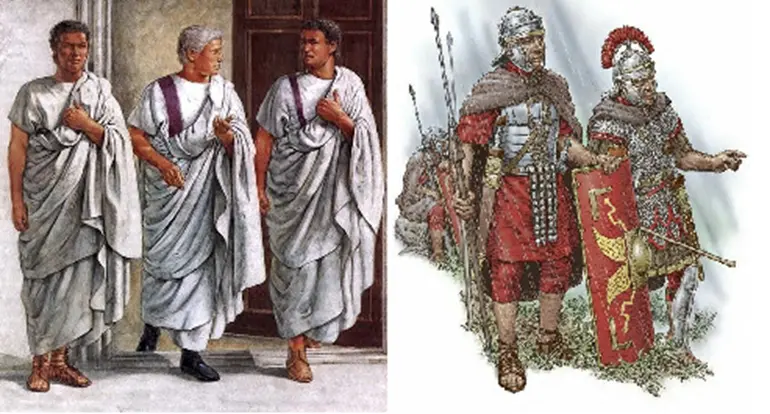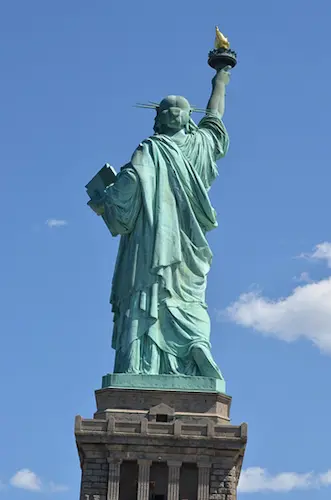Civil and Martial

“Ceterum censeo Carthaginem esse delendam.” – Cato the Elder
“Where do they think we’re gonna find that much salt out here?” – Scipio Africanus (probably)
We’ve spoken about “martial” and “civil” as distinct concepts in tai chi, both in this blog and in class. It’s time to expand on these concepts and lay out what we mean when we say “civil” and “martial.”
The following passages come from “Explaining Tai Chi Principles,” attributed to Yang Banhou around 1875. The book is a wealth of knowledge about tai chi from a man who knows what he’s talking about and is able to explain it well. With thanks to Paul Brennan for his admirable work in translating this and many other important martial arts texts, I take the liberty of using his words to convey Yang Banhou’s intentions:
“The civil quality is the substance. The martial quality is the application. The civil training within the martial application is a matter of the essence, energy, and spirit. It is the physical cultivation. The martial training of the civil substance is a matter of mind and body. It is the martial reality.”
“It is said that a dose of civil in the martial makes it a softened physical exercise, the sinewy power of essence, energy, and spirit [jing, qi and shen, the “Sanbao” or “Three Jewels” of Chinese Internal Alchemy we’ve talked about before – ed.], while adding more martial to the martial would make it a hardened fighting drill, a solid effort of mind and body. The civil quality without the martial quality at the ready would be just application without substance. The martial quality without the civil quality in tandem would be substance without application. Since one piece of wood will not support a whole building, and since you cannot clap your hands with just one hand, this is not just a matter of health and fighting, but is a principle that applies to everything.”
“The civil quality is the inner principle. The martial quality is the outward skill. Those who have the outward skill but lack the civil principle will be consumed by reckless glory. Discarding the original purpose of the art, they will try to overpower opponents and inevitably lose. Those on the other hand who have the civil principle but lack the outward skill will be distracted by meditative expectation. They will have no idea what to do in a fight, and they will be destroyed the moment it turns chaotic. To apply this art upon an opponent, you must understand both the civil and martial qualities.”
“Once you are identifying your own energies, you will be working your way toward something miraculous. Succeed at the civil aspect and then delve into the martial.”
“As far as the Way goes, without cultivating the self, there is no source from which to obtain it. It is separated into three vehicles for cultivation, “vehicle” meaning accomplishment. The greater vehicle takes you all the way to the top. The lesser vehicle gets you at least to the bottom. The middle vehicle is to succeed via sincerity. The methods are separated into three kinds of cultivation, but are working towards the same accomplishment.
“Cultivation of the civil quality is internal. Cultivation of the martial quality is external. Physical training is internal. Martial affairs are external. When the cultivation methods, both internal and external, surface and interior, are merged and achieved together, this is a grand accomplishment, the top.
“When one obtains the martial quality by way of the civil training or obtains the civil quality by way of the martial training, this is the middle.
“When one knows only the civil training but knows nothing of the martial part of it or focuses on only the martial part of it but does not do the civil training, this is the bottom.”
It’s helpful, when reading passages like these, to return to the source material. We can’t just assume, when we read a section of a book written by a Chinese martial artist from the late Qing dynasty, that we know what he means. Time shifts meaning, and all language is closely related to the culture of the speaker or writer.
The Chinese word translated as “civil” is 文, pronounced “wén” but with a rising lilt, like asking “When?” in English. The Chinese word translated as “martial” is 武 and is pronounced “wŭ,” with a dipping lilt in the “u” sound.
武 (wŭ) is straightforward. It means “martial” or “military” and not much else. It’s the first part of the word “wushu” which literally translates into “martial arts.” The character (with the same pronunciation) finds its way into many Chinese place names (Lingwu, Pingwu, Changwu and so on) that all refer to counties. It may be pareidolia but it strikes me that this element of the place-name bears similarity to a number of places in the United Kingdom whose names all end in “caster” or “chester” such as Lancaster, Tadcaster, Manchester or Colchester. The ending – “caster” or “chester” – ultimately derives from the Latin word “castra” which referred to a Roman fort or fortified camp, and indicates that the town grew around a Roman fort. It may be that 武 has the same vestigial meaning from a long-ago fortification, but I’m only guessing from the fact that the word has an unusually small “cluster” of meanings.
文 or “wén” is a harder word to pin down. Its cluster of meanings tend to refer either to a) written language or b) formal, cultured gentility. Yang Banhou goes to some length throughout the book describing what he means by “civil,” which suggests to me that he’s using the term as a sort of allegorical jargon-word. I don’t know enough about traditional Chinese martial arts generally to know whether this usage is common in arts like Xingyi quan, Bagua zhang, Hung Gar or elsewhere.
What I believe he means by 文 – and bear in mind, this is only my opinion – is twofold, what I’ll refer to as the “technical” and the “artistic.”
By “technical,” I refer to the things like the Ten Essential Principles, the Eight Energies and Five Steps, the purposeful planting of the leading foot before shifting our weight to it and so on. In other words, the things that will lead to success if only we do them correctly.
By “artistic,” I mean things like feeling how a move feels right for you, the subtlety of perception and the non-thinking way we learn to “enter voids and deflect solids” in push-hands, the differences in our expression of tai chi, one person to the next, and even one day to the next, depending on how we feel, the degree of connectedness between our art and our “self,” and so on. In other words, the things which differentiate our art (and our expression of it) from every other martial art and every other martial artist. It is the “art” portion of “martial art,” both creative (yang) and receptive (yin) at the exact same time.
What follows is speculation on my part, but it’s based on the record. I gather by his explanation – in particular the way he expands on it – is that by the 1870s, many tai chi players were engaging in the art with little thought of its “martial” aspect, just like there were people who thought of it only as a martial art and trained in it no differently than any other art; that is to say, “externally.” 20 or 30 years is plenty of time for such shifts in focus and dilutions to occur. He refers to these “half-players” as the “bottom accomplishment;” and if he sounds judgmental well, he’s kind of entitled to be. He still refers to this as an “accomplishment,” but it’s clear he saw such players as cheating themselves out of tai chi’s fullest potential.
You’re doubtless sick of hearing and reading me say that the reason I teach tai chi as a martial art is so we can better understand its energies and more easily unlock its potential. These passages and others in Yang Banhou’s book are where the idea comes from. Civil and martial are two aspects of the same thing; focusing on one without considering the other is like choosing to look at only one side of a statue…

…and the odds are good you’re not even looking at the important side!
